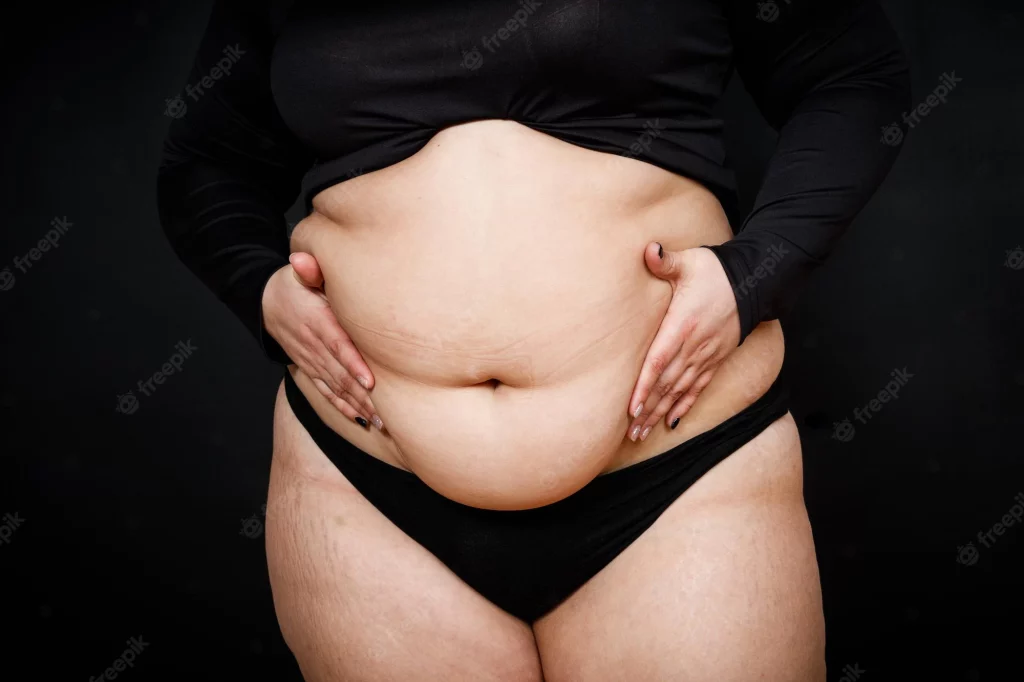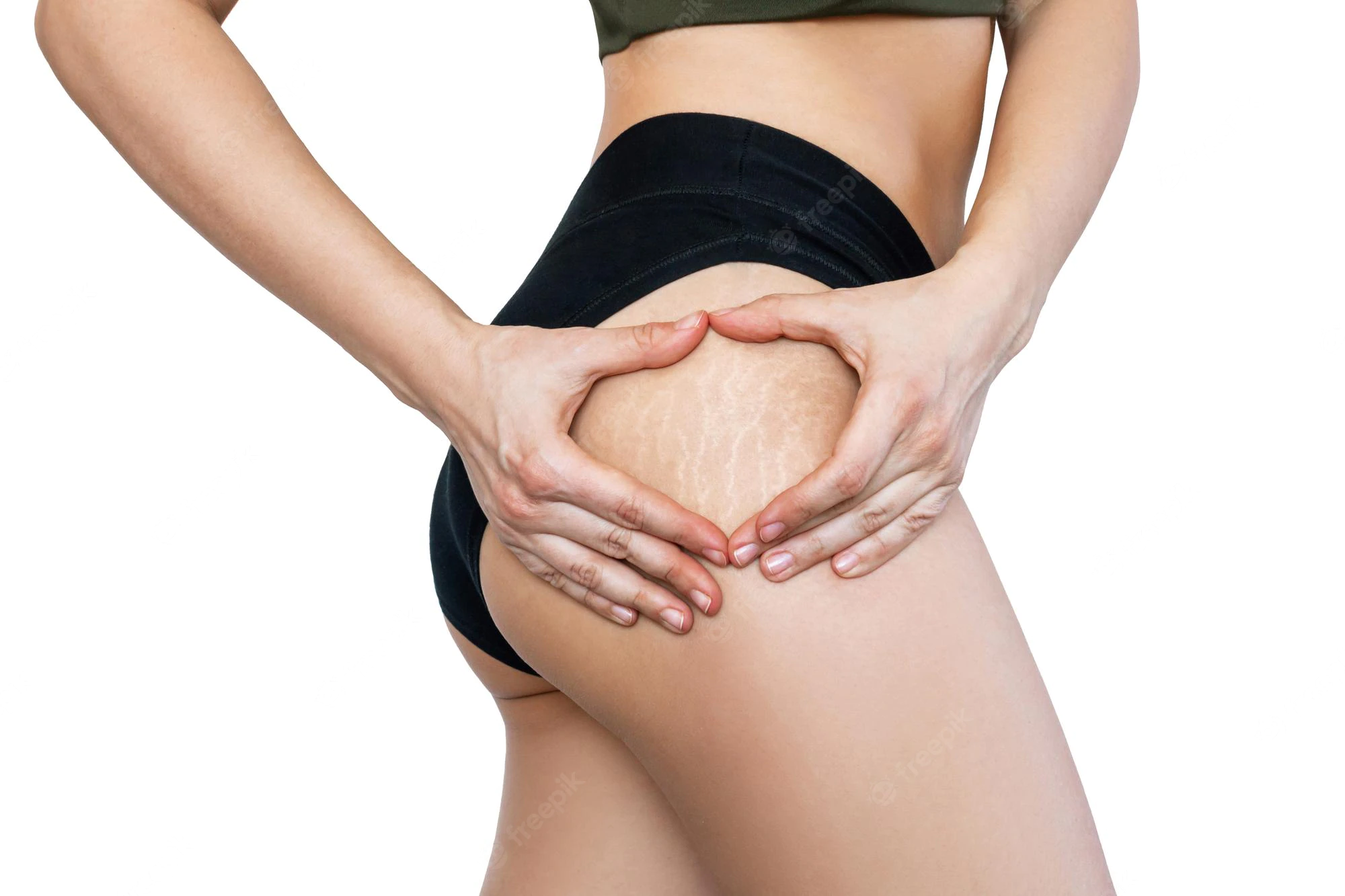
Stretch marks are a sign of extreme physical or emotional stress. They can form on any part of the body, but are most commonly seen on the skin around the hips, thighs, and buttocks. While they may look unsightly, stretch marks are nothing to be afraid of – in fact, they can actually be a source of pride for some people.
Contents
- 1 Stretch Marks: What They Are and How They Form
- 2 The Types of Stretch Marks You May Get
- 3 The Best Ways to Treat Stretch Marks
- 4 Pre-emptive Measures for Prevention of Stretch Mark Formation
- 5 Post-Stretching Remedies for Reducing the Appearance of Stretch Marks
- 6 What are stretch marks?
- 7 What causes stretch marks?
- 8 How to get rid of stretch marks?
- 9 What to do if stretch marks are already there?
- 10 Conclusion
Stretch Marks: What They Are and How They Form
Stretch marks are lines that appear on the skin as a result of stretching. They can occur on any part of the body, but are most commonly seen on the breasts, thighs, and buttocks. Stretch marks can take many different forms, from simple ridges to deep grooves. The cause of stretch marks is unknown, but they may be caused by a number of factors, including weight gain or loss, childbirth, exercise, and pregnancy.
Most stretch marks fade over time, but they may occasionally cause pain and discomfort. They can also be a source of embarrassment for individuals who experience them. If you’re concerned about your stretch marks, talk to your doctor or other health professionals about treatment options.
The Types of Stretch Marks You May Get
Stretch marks are scars that result from the repeated stretching or tearing of the skin. There are a few different types of stretch marks, and each one has its own unique cause and appearance. Here are the four most common types of stretch marks:
1. Hypertrophic stretch marks (also called striae gravidarum) are reddish brown pigmented lines that form on the abdominal wall during pregnancy as the skin stretches to accommodate the growing fetus. Hypertrophic stretch marks typically fade in color over time, but may occasionally lighten or disappear completely.
2. Congenital stretch marks (stretchmarks due to genetic disposition) are a type of scar that is usually seen on the face and body during infancy or early childhood. These stretch marks can be discolored, raised, and tend to fade slowly over time. Some people may also have multiple types of congenital stretch marks.
3. Dystrophic stretchmarks (also called striae distensae) develop as a result of repeatedly stretching a single area of skin beyond its normal range of motion. Dystrophic stretchmarks are pale or flesh-colored, with a definite texture and a slightly bluish hue. They typically last for
The Best Ways to Treat Stretch Marks
Stretch marks are a common side effect of pregnancy and childbirth. They can form on any part of the body, but are most commonly seen on the skin near the waist or chest. Stretch marks can be treated in a variety of ways, but the best approach depends on the individual’s symptoms and goals. Here are five tips for treating stretch marks:
1. Apply topical treatments. These treatments include creams, lotions, and gels that help to improve the appearance of stretch marks by hydrating the skin and reducing inflammation. Some topical treatments also contain ingredients that help to diminish the appearance of scars.
2. Use light therapy. This treatment is often used to help reduce the appearance of scars. A light device is placed over the stretch mark and activated to produce an electrical current that helps to stimulate healing.
3. Use lasers or cryotherapy. Laser and cryotherapy treatments are often used together as they have synergistic effects on skin regeneration. Laser treatment targets specific skin cells while cryotherapy uses cold temperatures to kill these cells and reduce scarring.
4.Use vitamins C and E as natural remedies. These vitamins are known to help promote collagen production, which is important for improving elastic
Pre-emptive Measures for Prevention of Stretch Mark Formation
Stretch marks are a natural consequence of the stretching and distorting of the skin during childbirth, weightlifting, exercise, or pregnancy. Stretch marks may also form from physical trauma or burns. However, they can also form as a result of cosmetic procedures such as laser treatment and dermabrasion. Despite their natural origins, stretch marks can be treated with common skincare ingredients and treatments.
Stretch marks are generally harmless but can leave behind scars. If you are concerned about your stretch marks, it is important to talk to your doctor or dermatologist about your options for prevention. Here are some tips to help reduce the likelihood of developing stretch marks:
– Be aware that stretching will cause the skin to thin and lose elasticity. This means that stretch marks will likely form on areas of the skin that are already thin.
– Avoid overexerting yourself either physically or mentally. Exercise is important for overall health but too much exercise can lead to excessive strain on the skin, which is another risk factor for developing stretch marks.
– Consider using topical skincare products that protect the skin against sun damage and other harmful factors. The non-damaging properties of these products may help prevent stretch mark
Post-Stretching Remedies for Reducing the Appearance of Stretch Marks
There are a few things that you can do to reduce the appearance of stretch marks.
The first thing that you can do is to use a topical cream or lotion that contains antioxidants. These topical creams help to prevent the formation of stretch marks by protecting the skin from damage.
You can also make a hot bath and add some baking soda to it. This will help to remove any dead skin cells and toxins that may be causing your stretch marks to appear more prominent.
Finally, you can try using lightening or self-tanning products to reduce the appearance of your stretch marks. By using these products, you will help to camouflage the redness and browning that is often associated with stretch marks.
What are stretch marks?
Stretch marks are the result of tissue stretching and are most commonly seen on the skin around the breasts, hips, abdomen, and thighs. They can also appear on the skin of the face and neck.
Stretch marks usually occur after skin has been stretched beyond its natural elasticity. This can happen during childbirth, weightlifting, overexercising, or during periods of rapid growth such as during puberty.
stretch marks don’t always look bad. In fact, many people prefer them to traditional scars because they fade over time and often blend in well with a person’s skin tone. However, for some people stretch marks may be a source of embarrassment or pain.
There is not currently a cure for stretch marks, but there are treatments that can help improve their appearance. Treatment options include topical creams and injections, laser therapy, and cryotherapy (freezing).
What causes stretch marks?
Stretch marks are caused by a combination of genetics and the way your skin stretches. They can happen during pregnancy, during weight gain or loss, and after childbirth.
There are a few things that can cause stretch marks:
– overexertion or physical stress on the skin
– intense sunlight or ultraviolet light exposure
– excess oil or sweat on the skin
– certain medications, like Accutane (isotretinoin) and some birth control pills
How to get rid of stretch marks?
Stretch marks are a common side effect of pregnancy and can be temporary or permanent. There are a few ways to get rid of stretch marks, but the most effective is probably a combination of methods. Here are some tips:
– Apply topical creams or ointments that contain hydroquinone, retinoids, and/or vitamin A derivatives. These treatments help to lighten the skin and reduce the appearance of scars.
– Use light massage and/or topical heat to soften the scar tissue.
– Use lasers or light devices to break up the scar tissue. These treatments can be done in a doctor’s office, but may be more expensive than other methods.
What to do if stretch marks are already there?
If stretch marks are already present, there are a few things you can do to help improve their appearance. First, make sure you’re taking care of your skin overall by following a daily skin care routine and using sun protection when necessary. Second, try using topical treatments like glycolic acid or retinoids to gently exfoliate and remove scar tissue. Finally, consider laser therapy or light treatment options to help reduce the appearance of scars in specific areas.
Conclusion
Stretch marks are a common occurrence in the world, and unfortunately they can be quite frustrating. If you’re wondering why stretch marks happen and what you can do to prevent them, read on for some helpful tips. First and foremost, make sure to hydrate well throughout the day so that your skin doesn’t become too dry. Also, avoid rubbing or scratching the mark as this will only make it worse. Finally, take ibuprofen if the pain is severe; it’ll help reduce swelling and inflammation.

